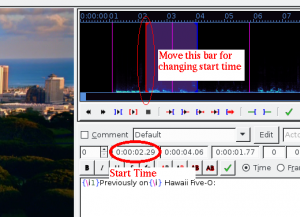How to remove
It’s not as easy as it seems. First of all, do not use the official Uninstaller from Adobe. I don’t know what it does other than showing a reverse progress bar, but it certainly does not remove the Flash-Crap from your computer.
To remove it for good, you have to jump through several hoops:
- Close every program using Flash, like IE (if you’re using this piece of shit) or Firefox. AFAIK Chrome has its own plugin, but it can’t hurt to close it, too
- Open the Explorer and go to C:\Windows\System32. Select the Macromed-Folder and take ownership. Then grant yourself full access including all subdirectories.
- Delete the Folder
- Do the same in C:\Windows\SysWOW64.
- Take ownership of C:\Windows\SysWOW64\FlashPlayerApp.exe and C:\Windows\SysWOW64\FlashPlayerCPLApp.cpl, grant yourself full access and delete the files
- Go to %appdata% and remove the Macromedia\Flash directory
- Reboot (surprise!)
- Check that the Flash-Crap is gone from the control panel
- Open this link in Edge or IE to see if Flash is gone for good
- If you’re using Chrome, disable the plugin in about:plugins
What else can I do?
If you’re monitoring your Windows-Box with check_mk, you can use these scripts to check for Flash.
Put this into C:\Program Files (x86)\check_mk\local\check_flash.ps1 or wherever your check_mk agent is installed
$items = "C:\Windows\System32\Macromed",`
"C:\Windows\SysWOW64\Macromed",`
"C:\Windows\SysWOW64\FlashPlayerApp.exe",`
"C:\Windows\SysWOW64\FlashPlayerCPLApp.cpl"
echo "<<<flash_gordon>>>"
foreach ($i in $items){
if(Test-Path $i){
echo ("{0} 1" -f $i)
}else{
echo ("{0} 0" -f $i)
}
}
Now put this script into ~siteuser/local/share/check_mk/checks/flash_gordon:
#!/usr/bin/python
def inventory_flash_gordon(info):
inventory = []
for line in info:
inventory.append((line[0], line[1]))
return inventory
def check_flash_gordon(items, params, info):
retstring = "Good, no Flash-Crap found!"
found = []
retval = 0
for line in info:
if int(line[1]) > 0:
found.append(line[0])
if found:
retstring = "Crap, found %s" % ', '.join(found)
retval = 2
return (retval, retstring)
check_info["flash_gordon"] = {
"check_function": check_flash_gordon,
"inventory_function": inventory_flash_gordon,
"service_description": "Check for Adobe Flash Crap",
"has_perfdata": False,
}
Reinventorize. Now the host goes CRITICAL if any part of Flash is found.
[Update 2015-12-09]
I hate this crap! Windows Update decided that I need a security update for Flash, even though it isn’t installed any more. What the fuck? Of course the update fails, but in their wisdom they decided to remove the option to hide updates from the Windows 10 dialog. Now you have to use this program 🙁
Anyway, I only noticed it because of check_mk. At least now I know it works 🙂 Let’s see when this bites my ass…
[Update 2015-12-30]
What a clusterfuck! Another Windows update for flash. Thanks to check_mk I noticed it right away. Shouldn’t be too difficult to check for this crap before installing the update, right?
[Update 2016-11-10]
Finally got tired of removing this crap manually again and again! Since you can’t prevent Windows Update from installing this shit, I wrote a script to put it where it belongs. You need the Powershell Community Extensions (PSCX) for it to work. Install then, download the txt, remove the txt-Extension and replace the owner with whatever is appropriate.
Have fun!
